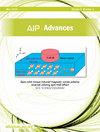Fitting COVID-19 datasets to a new statistical model
IF 1.4
4区 物理与天体物理
Q4 MATERIALS SCIENCE, MULTIDISCIPLINARY
引用次数: 0
Abstract
This paper discussed gull alpha power Weibull distribution with a three-parameter. Different statistical inference methods of Gull Alpha Power Weibull distribution parameters have been obtained, estimated, and evaluated. Then, the results are compared to find a suitable model. The unknown parameters of the published Gull Alpha Power Weibull distribution are analyzed. Seven estimation methods are maximum likelihood, Anderson–Darling, right-tail Anderson–Darling, Cramér–von Mises, ordinary least-squares, weighted least-squares, and maximum product of spacing. In addition, the performance of this distribution is computed using the Monte Carlo method, and the limited sample features of parameter estimates for the proposed distribution are analyzed. In light of the importance of heavy-tailed distributions, actuarial approaches are employed. Applying actuarial criteria such as value at risk and tail value at risk to the suggested distribution shows that the model under study has a larger tail than the Weibull distribution. Two real-world COVID-19 infection datasets are used to evaluate the distribution. We analyze the existence and uniqueness of the log-probability roots to establish that they represent the global maximum. We conclude by summarizing the outcomes reported in this study.用新的统计模型拟合 COVID-19 数据集
本文讨论了具有三个参数的鸥α幂Weibull分布。对 Gull Alpha Power Weibull 分布参数的不同统计推断方法进行了获取、估计和评估。然后,对结果进行比较,以找到合适的模型。对已发布的 Gull Alpha Power Weibull 分布的未知参数进行了分析。七种估计方法包括最大似然法、安德森-达林法、右尾安德森-达林法、克拉梅尔-冯-米塞斯法、普通最小二乘法、加权最小二乘法和最大间距积法。此外,还使用蒙特卡洛方法计算了该分布的性能,并分析了拟议分布参数估计的有限样本特征。鉴于重尾分布的重要性,我们采用了精算方法。将风险值和风险尾值等精算标准应用于所建议的分布,结果表明所研究的模型比 Weibull 分布具有更大的尾部。两个真实的 COVID-19 感染数据集被用来评估该分布。我们分析了对数概率根的存在性和唯一性,以确定它们代表了全局最大值。最后,我们总结了本研究的成果。
本文章由计算机程序翻译,如有差异,请以英文原文为准。
求助全文
约1分钟内获得全文
求助全文
来源期刊

AIP Advances
NANOSCIENCE & NANOTECHNOLOGY-MATERIALS SCIENCE, MULTIDISCIPLINARY
CiteScore
2.80
自引率
6.20%
发文量
1233
审稿时长
2-4 weeks
期刊介绍:
AIP Advances is an open access journal publishing in all areas of physical sciences—applied, theoretical, and experimental. All published articles are freely available to read, download, and share. The journal prides itself on the belief that all good science is important and relevant. Our inclusive scope and publication standards make it an essential outlet for scientists in the physical sciences.
AIP Advances is a community-based journal, with a fast production cycle. The quick publication process and open-access model allows us to quickly distribute new scientific concepts. Our Editors, assisted by peer review, determine whether a manuscript is technically correct and original. After publication, the readership evaluates whether a manuscript is timely, relevant, or significant.
 求助内容:
求助内容: 应助结果提醒方式:
应助结果提醒方式:


